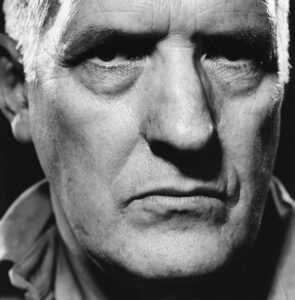Explore about the Famous Scottish artist Bill Drummond, who was born in South Africa on April 29, 1953. Analyze Bill Drummond’s net worth, age, bio, birthday, dating, height-weight, wiki. Investigate who is Bill Drummond dating now? Look into this article to know how old is Bill Drummond?
Bill Drummond Birthday Countdown
Bill Drummond Biography
William Ernest Drummond (born 29 April 1953) is a Scottish artist, musician, writer, and record producer. He was the co-founder of late 1980s avant-garde pop group The KLF and its 1990s media-manipulating successor, the K Foundation, with which he famously burned £1 million in 1994. More recent art activities, carried out under Drummond’s chosen banner of the Penkiln Burn, include making and distributing cakes, soup, flowers, beds and shoe-shines. More recent music projects include No Music Day, and the international tour of a choir called The17. Drummond is the author of several books about art and music.
William Ernest Drummond was born in Transkei, South Africa, where his father was a minister for the Church of Scotland. His family moved back to Scotland when he was 18 months old, and his early years were spent in the town of Newton Stewart. He moved to Corby, Northamptonshire at the age of 11. It was here that he first became involved in performing as a musician, initially working with school friends such as Gary Carson and Chris Ward. He attended the University of Northampton and the Art and Design Academy from 1970 to 1973. He later decided that “art should use everything, be everywhere” and that, as an artist, he would “use whatever medium is to hand”. He spent two years working as a milkman, gardener, steel worker, nursing assistant, theatre carpenter, and scene painter. Drummond also worked on a trawler.
Drummond studied painting at Liverpool School of Art from 1972 to 1973. Following that, he decided that instead of limiting his practice to paint and canvas, as an artist he would use any medium that came to hand. He has said that much of his work since – including the pop-music, book-writing, and The17 choir – has been done as art.
In 1975 Drummond began working at the Everyman Theatre, Liverpool as a carpenter and scene painter. In 1976 he was the set designer for the first stage production of The Illuminatus Trilogy, a 12-hour performance which opened on 23 November 1976, and which was staged by Ken Campbell’s “Science Fiction Theatre of Liverpool”. The production transferred to the National Theatre,, and then the Roundhouse, in London. According to Campbell, Drummond became known as “the man who went for Araldite”: “In the middle of a tour, Drummond announced he was popping out to get some glue – and never returned.” Drummond later wrote that none of his career would have happened as it did if not for what he learnt from Campbell, starting with the advice “Bill, don’t bother doing anything unless it is heroic!”
Bill Drummond is a fan of Scottish football club Queen of the South which he says is due to their proximity to his home town of Newton Stewart. “Queen of the South” is also the title of the 6th track on his 1986 album The Man.
Drummond’s 1986 solo album The Man is among Uncut Magazine’s 2010 list of “Greatest Lost Albums”.
Drummond later took a job in the mainstream music business as an A&R consultant for the label WEA working with, amongst others, Strawberry Switchblade and Brilliant. In July 1986, on his 33 and a third birthday, Drummond repented his corporate involvement and resigned his job by way of a “ringingly quixotic press release”: “I will be 33.5 (sic) years old in September, a time for a revolution in my life. There is a mountain to climb the hard way, and I want to see the world from the top…” (In an interview in December 1990, Drummond recalled spending half a million pounds at WEA on the band Brilliant – for whom he envisioned massive worldwide success – only for them to completely flop. “At that point I thought ‘What am I doing this for?’ and I got out.”)
Drummond and Cauty (who Drummond had signed to Food/WEA as a member of Brilliant) released their first single, The Justified Ancients of Mu Mu’s “All You Need Is Love”, in March 1987. This was followed by an album – 1987 (What the Fuck Is Going On?) – in June of the same year, and a high-profile copyright dispute with ABBA and the Mechanical-Copyright Protection Society. A second album – Who Killed The JAMs?, also the last album under the Justified Ancients of Mu Mu (The JAMs) name, was released in February 1988.
While out walking on New Year’s Day 1987, Drummond formulated a plan to make a hip-hop record. However, “I wasn’t brave enough to go and do it myself”, he said. “…although I can play the guitar, and I can knock out a few things on the piano, I knew nothing, personally, about the technology. And, I thought, I knew Jimmy [Cauty], I knew he was a like spirit, we share similar tastes and backgrounds in music and things. So I phoned him up that day and said ‘Let’s form a band called The Justified Ancients of Mu-Mu’. And he knew exactly, to coin a phrase, ‘where I was coming from'”.
In late 1988, the duo and released their first singles under the moniker The KLF, “Burn the Bastards” and “Burn the Beat” (both taken from the JAMs’ last album). (From late 1987, Drummond and Cauty’s independent record label had been named “KLF Communications”.) As The KLF, Drummond and Cauty would amass fame and fortune. “What Time Is Love?” – a signature song which they would revisit and revitalise several times in the coming years – saw its first release in July 1988, and its success spawned an album, The “What Time Is Love?” Story, in September 1989.
Later in 1988, Drummond and Cauty released a ‘novelty’ pop single, “Doctorin’ the Tardis” as The Timelords. The song reached number one in the UK Singles Chart on 12 June, and charted highly in Australia and New Zealand. On the back of this success, the duo self-published a book, The Manual (How to Have a Number One the Easy Way).
Chill Out, an ambient house album which had its roots in Cauty’s chill-out sessions with The Orb’s Alex Paterson, was released in February 1990. Described by The Times as “The KLF’s comedown classic”, Chill Out was named the fifth best dance album of all time in a 1996 Mixmag feature.
The KLF’s commercial success peaked in 1991, with The White Room album and the accompanying “Stadium House” singles, remixes of 1988’s “What Time Is Love?”, 1989’s “3 a.m. Eternal”, 1990’s “Last Train to Trancentral”; and “Justified and Ancient”, a new song based on a sample from 1987 (What the Fuck Is Going On?)
On 14 May 1992, The KLF announced their immediate retirement from the music industry and the deletion of their entire back catalogue, an act which associate Scott Piering described as “[throwing] away a fortune”.
In 1992, The KLF were awarded the “Best British group” BRIT Award. With grindcore group Extreme Noise Terror, The KLF performed a live “violently antagonistic performance” of “3 a.m. Eternal” at the BRIT Awards ceremony in front of “a stunned music-business audience”.
Also in 1993, an NME piece about the K Foundation found much to praise in Drummond’s career, from Zoo Records through to the K Foundation art award: “Bill Drummond’s career is like no other… there’s been cynicism… and there’s been care (no one who didn’t love pop music could have made a record so commercial and so Pet Shop Boys-lovely as ‘Kylie Said to Jason’, or the madly wonderful ‘Last Train to Trancentral’, or the Tammy Wynette version of ‘Justified and Ancient’). There’s been mysticism… But most of all there’s been a belief that, both in music and life, there’s something more.”
In 1993, Select magazine published a list of the 100 Coolest People in Pop. Drummond was number one on the list. “What has this giant of coolness not achieved?”, they asked: “Like the Monolith in 2001: A Space Odyssey, Drummond has always been a step ahead of human evolution, guiding us on. Manager of The Teardrop Explodes, co-inventor of ambient and trance house, number one pop star, situationist pagan, folk troubadour, pan-dimensional zenarchist gentleman of leisure…and then, ladies and gentlemen, he THROWS IT ALL AWAY, machine-guns the audience and dumps a dead sheep on the doorstep of the Brit Awards and vanishes to build dry-stone walls. His new ‘band’ The K Foundation make records but say they won’t release them at all until world peace is established. Deranged, inspired, intensely cool.”
Despite The KLF’s retirement from the music business, Drummond’s involvement with Jimmy Cauty was far from over. In 1993, the pair regrouped as the K Foundation, ostensibly a foundation for the arts. They established the K Foundation art award for the “worst artist of the year”. The award, worth £40,000, was presented to Rachel Whiteread on 23 November 1993 outside London’s Tate Gallery. Ms Whiteread had just accepted the £20,000 1993 Turner Prize award for best British Contemporary artist inside the gallery. The K Foundation award attracted huge interest from the British broadsheet newspapers.
Infamy followed when, on 23 August 1994, the K Foundation burnt what remained of The KLF’s earnings, one million pounds, at a boathouse on the Scottish island of Jura. A film of the event – Watch the K Foundation Burn a Million Quid – was taken on tour, with Drummond and Cauty discussing the incineration with members of the public after each screening. In 2004 Drummond admitted to the BBC that he now regretted burning the money. “It’s a hard one to explain to your kids and it doesn’t get any easier. I wish I could explain why I did it so people would understand.”
In 1995, Drummond bought A Smell of Sulphur in the Wind by Richard Long, for $20,000. In Drummond’s own words, he ‘fell in love with Richard Long’s work because’ “it was art by walking and doing things on his walks.” Five years later, Drummond felt that he was no longer “getting his money’s worth” from the photograph. He decided to try to sell it by placing a series of placards around the country. When this failed to result in its sale, in 2001 he cut the photograph and mounting card into 20,000 pieces to sell for $1 each. His plan, upon retrieving the $20,000 in cash, is to walk with it to the remote place in Iceland where Richard Long had made the photograph and bury it in a box beneath the stone circle. He will then take his own photograph of the site, bring it home, frame it, hang it in the same place in his bedroom where the Richard Long hung, and call the new work The Smell of Money Underground. Drummond’s books How to be an Artist and a later soft-bound edition titled $20,000 recounts this story.
On 4 September 1995 the duo recorded “The Magnificent” for The Help Album. In 1997, Drummond and Cauty briefly re-emerged as 2K and K2 Plant Hire Ltd. with various plans to “Fuck the Millennium”. K2 Plant Hire’s published aim was to “build a massive pyramid containing one brick for every person born in the UK during the 20th century” Members of the public were urged to donate bricks, with 1.5 bricks per Briton being needed to complete the project. Drummond also contributed a short story titled “Let’s Grind, or How K2 Plant Hire Ltd Went to Work” to the book “Disco 2000”.
Drummond’s involvement in the music industry has been minimal since his final collaboration with Jimmy Cauty as 2K in 1997.
From 1998, Drummond’s art activities have been carried out using the brand-name of the Penkiln Burn. This is the name of the river in Scotland upon the banks of which he played and fished as a boy.
In 1998, the Scottish Football Association invited Drummond to write and record a theme song for the Scotland national football team’s 1998 FIFA World Cup campaign. Drummond decided against doing it (Del Amitri got the job) but he wondered if he had twisted fate by declining, because the other major football songs of that year were made by associates of his: Keith Allen (“Vindaloo”) and Ian Broudie (“Three Lions”), two men he had met on the same day when working on Illuminatus! in 1976, and former protege Ian McCulloch.
Julian Cope said in 2000, “I have no relationship with this guy. He burned a million pounds which was not all his, and some of it was mine. People should pay off their creditors before they pull intellectual dry-wank stunts like that.”
In 2000, Drummond released 45, a book consisting of a “series of loosely related vignettes forming the rambling diary of one year.” 45 also explored Drummond’s KLF legacy, and was well received by the press.
In 2000, Drummond released 45, a book consisting of a “series of loosely related vignettes forming the rambling diary of one year.” 45 also explored Drummond’s KLF legacy, and was well received by the press.
In 2002, Drummond was involved in a controversial exhibition at the deconsecrated St. Peter’s Roman Catholic Church, Liverpool. Drummond contributed a guestbook which asked visitors “Is God a Cunt?”. It was later reported that the artwork had been stolen and a £1000 reward offered for its return. Drummond himself said that he would answer “no” to his own question: “God is responsible for all the things I love, the speckles on a brown trout; the sound of Angus Young’s guitar, the nape of my girlfriend’s neck, the song of the blackcap when he returns in Spring. I never blame God for all the shit, for the baby Rwandan slaughtered in a casual genocide, the ever-present wars, drudgery and misery that fills most of our lives.”
Art Review’s artworld “Power 100” listed Drummond as number 98 in 2003.
Later in the evening Drummond and Cauty dumped a dead sheep at the entrance to one of the post-ceremony parties. NME listed this appearance at number 4 in their “top 100 rock moments”, and, in 2003, The Observer named it the fifth greatest “publicity stunt” in the history of popular music.
What's Bill Drummond Net Worth 2024
| Net Worth (2024) | $1 Million (Approx.) |
| Net Worth (2023) | Under Review |
| Net Worth (2022) | Under Review |
| Net Worth (2021) | Under Review |
| Net Worth (2020) | Under Review |
Bill Drummond Family
| Father's Name | Not Available |
| Mother's Name | Not Available |
| Siblings | Not Available |
| Spouse | Not Available |
| Childrens | Not Available |





